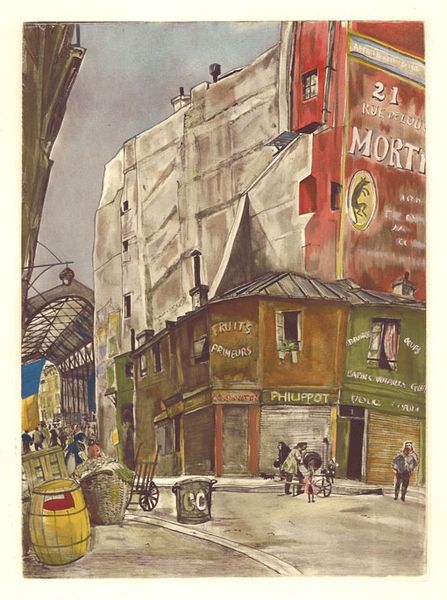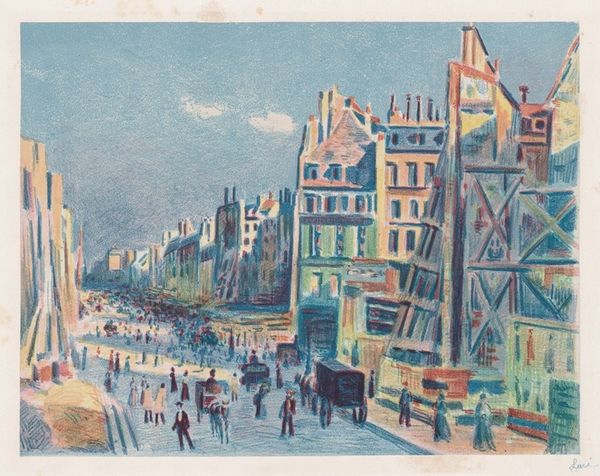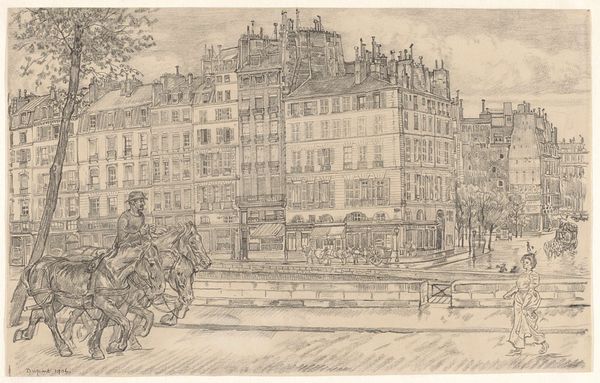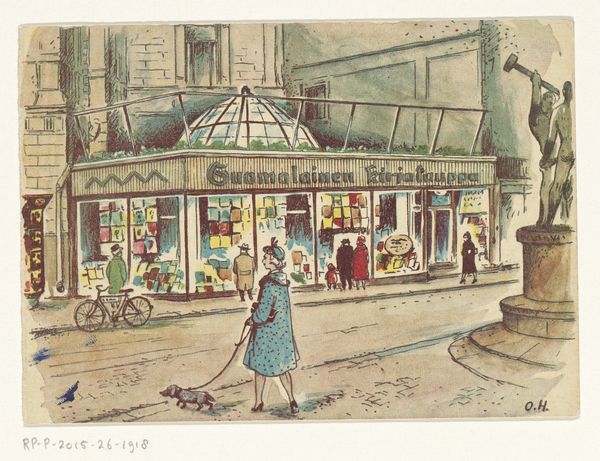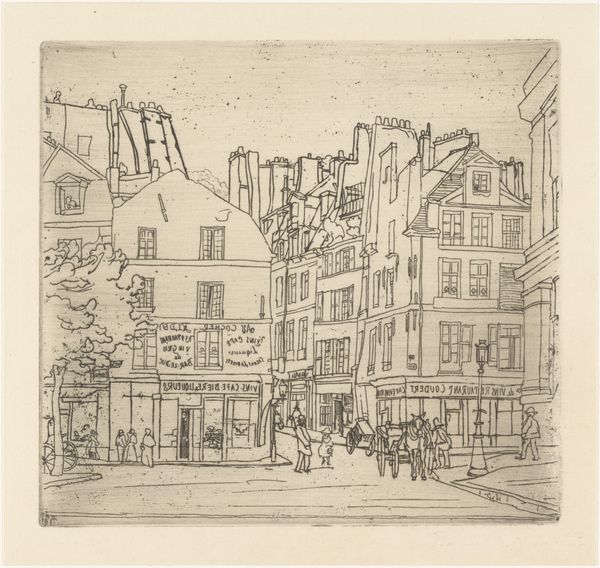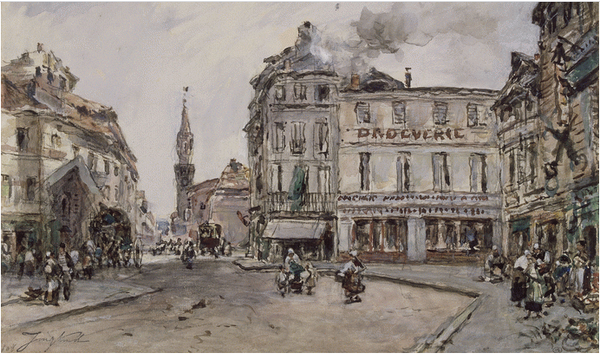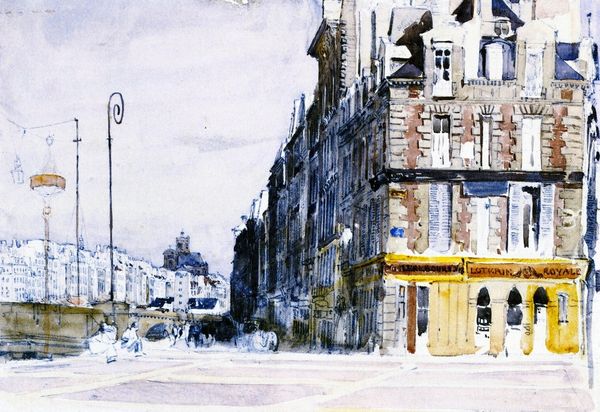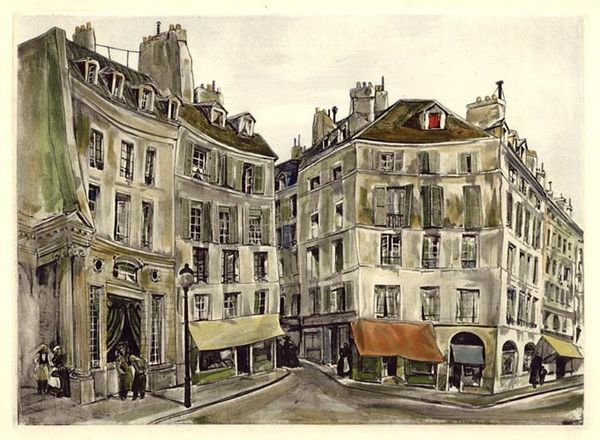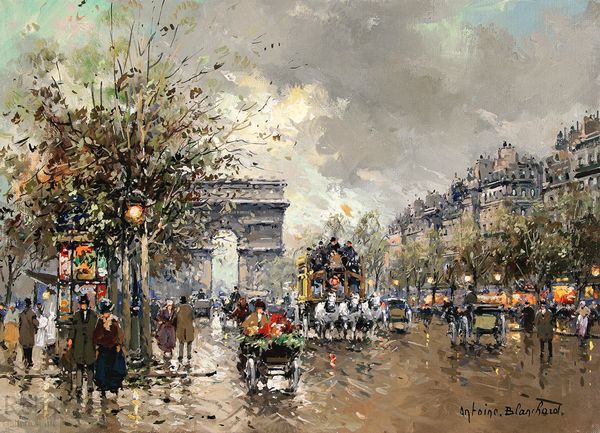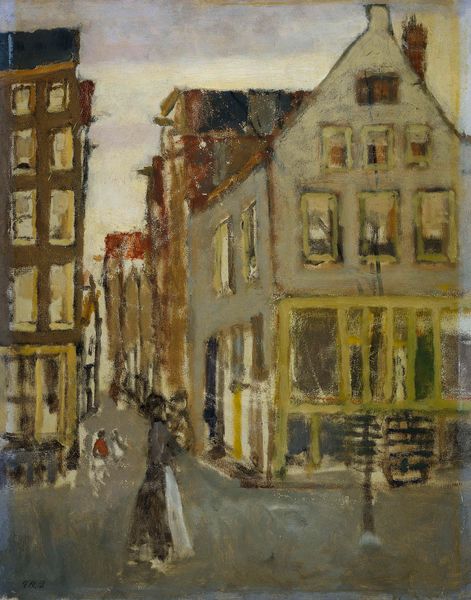
Copyright: Tsuguharu Foujita,Fair Use
Editor: Here we have Foujita's "Ternes," created in 1951. It looks like a plein-air watercolor painting of a bustling Parisian street market, maybe focusing on a seafood vendor. It's a wonderfully detailed scene, capturing the daily life and commerce, but I wonder about its artistic choices. How would you interpret this work, particularly regarding its material elements? Curator: This piece beautifully represents Foujita's engagement with post-war consumer culture. The very act of painting this street scene, with its focus on commerce and everyday goods, positions art-making within the broader context of material production and exchange. The visible labor, evident in the careful rendering of each item on display, from oysters to lemons, compels us to think about the artistic labor that's often overlooked. How do you think the use of watercolor influences our understanding of the scene’s materiality? Editor: That’s a great point! Watercolor is often associated with quick sketches or studies. Using it here emphasizes the ephemerality of the market itself – things coming and going, consumption happening in real-time. So, is Foujita suggesting that art itself is a form of consumption or commentary on it? Curator: Precisely! Think about the accessibility of watercolor as a medium, too. It democratizes the image, presenting a market scene that anyone could experience, anyone could consume from. The technique makes the elite subject of ‘fine art’ accessible, turning his attention to daily labor, trade, and how we participate in a society shaped by consumption. Editor: I never considered that artistic medium itself could challenge these boundaries between “high” and “low” art forms. Curator: This artwork serves as a perfect reminder of art's deep entanglement with the socio-economic realities of its time, urging us to rethink the artist’s hand within systems of material exchange and labor. Editor: Thank you, that's very helpful in seeing beyond the aesthetic! I appreciate you explaining how an artwork’s meaning comes from more than just what’s depicted. Curator: Absolutely. Foujita's "Ternes" helps us consider not just *what* we see, but *how* it was made, by whom, and in what material conditions.
Comments
No comments
Be the first to comment and join the conversation on the ultimate creative platform.

